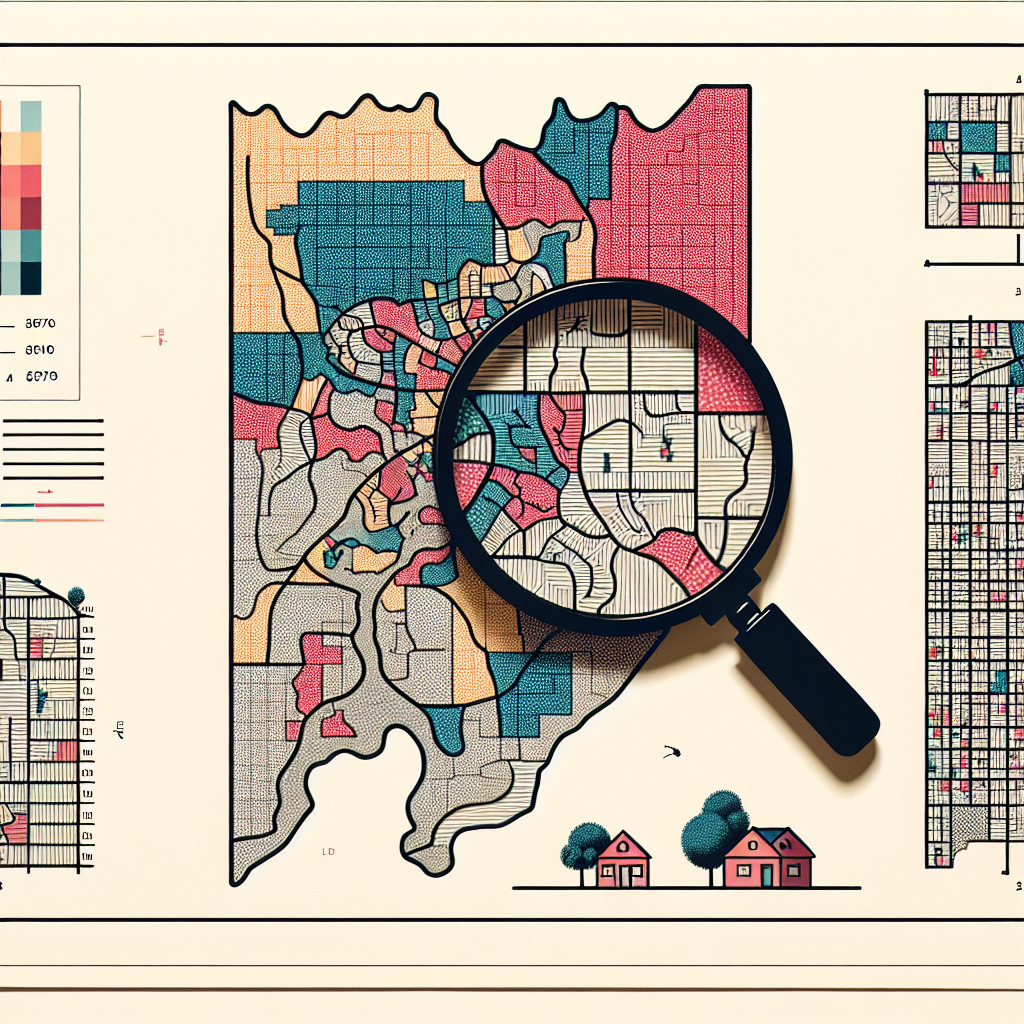Introduction
As the political landscape continues to evolve in 2025, the phenomenon of gerrymandering remains a focal point of discussion, particularly concerning its impacts on local elections. This strategic manipulation of electoral district boundaries can drastically influence electoral outcomes, practically shaping political power dynamics at the local level. Understanding the intricacies of gerrymandering is essential, as it not only affects political representation but also has wider implications for community engagement, voter turnout, and the overall integrity of the electoral process.
The Mechanics of Gerrymandering and Local Elections
Gerrymandering is the practice of drawing electoral district boundaries to favor one party over another, often resulting in disproportionately powerful representation for the dominant party. In local elections, where voter turnout tends to be lower compared to federal contests, gerrymandering can have even more pronounced effects. Political parties leverage sophisticated data analytics to identify areas with high concentrations of their supporters, allowing them to design districts that dilute opposition votes. By doing so, they can enhance their chances of winning elections by effectively ‘packing’ or ‘cracking’ their opponents’ voters, which severely skews fair representation.
The mechanics of gerrymandering are not purely a matter of political strategy; they are also informed by demographic trends, socioeconomic factors, and historical voting patterns. For example, in urban areas where different racial or socioeconomic communities reside, districts can be drawn to either include or exclude specific populations. This not only marginalizes minority voices but also polarizes communities into distinct voting blocs, making consensus-building and cooperation in local governance increasingly difficult. Such manipulation can lead to a cycle of voter apathy and disengagement as individuals begin to feel their voices are not adequately represented in the political process.
The Societal Consequences of Gerrymandering in Local Elections
The societal consequences of gerrymandering extend far beyond electoral outcomes; they permeate the very fabric of local communities. When districts are drawn to favor specific political parties, it often results in the neglect of critical issues affecting constituents, as representatives focus more on their party agenda than on the needs of their diverse populations. This disconnect can stifle productive dialogue and hinder effective policymaking, ultimately leading to dissatisfaction among voters.
Moreover, as gerrymandered districts create a greater divide between communities, the potential for civic involvement diminishes. When voters perceive that their electoral participation will not yield any tangible results, they become less likely to engage in local elections or community activities. As turnout decreases, the cycle of disengagement continues, leading to an electorate that is not only poorly represented but also less informed about local issues and conditions. This profound disenfranchisement can have a lasting impact on the socio-political dynamics of community life, as local government actions increasingly reflect the interests of a select few rather than the general populace.
Real-World Examples of Gerrymandering Impacts
To illustrate the impacts of gerrymandering in local elections, we can look at recent cases from across the United States. In many states, controversial redistricting processes have led to districts that often appear ludicrously shaped, such as those drawn in North Carolina and Texas. These affected regions witnessed significant polarization, with elected officials often prioritizing their base’s interests over broader community needs. As a result, important local issues—such as education reform, public safety, and healthcare access—have been overlooked, as representatives hustled for votes rather than engaging in substantive policy discussions that benefit the wider community.
Moreover, analysis of the 2024 local elections showed that the outcomes in these gerrymandered districts often led to ‘safe seat’ scenarios, where elected officials faced little to no challenge from opposition candidates. This complacency can produce a lack of accountability, as officeholders become insulated from dissenting views and critical community feedback. Consequently, citizens in these areas often feel powerless and disenfranchised, as their worries and priorities become sidelined in favor of party-line agendas.
Furthermore, the implications of gerrymandering are not just limited to electoral outcomes; they also extend to how government resources are allocated. In heavily gerrymandered districts, resource distribution can vastly favor certain areas over others, leading to inequality in public services, infrastructure, and investment. This can exacerbate social disparities and lead to a significant urban-rural divide, as political priorities focus on constituencies that support the ruling party rather than fostering a balanced approach to resource allocation across communities.
Efforts to Combat Gerrymandering and Reform Local Elections
Recognizing the detrimental effects of gerrymandering, various stakeholder groups, including civic organizations and advocacy groups, have sought to reform local election processes. These efforts aim to implement nonpartisan redistricting commissions that would draw district lines objectively and equitably, minimizing the influence of partisan politics. States like California, Arizona, and Michigan have made strides in this direction, providing successful models for other states to follow in hopes of achieving fairer electoral maps.
Technology and data-driven approaches are also playing a key role in the fight against gerrymandering. New algorithms and mapping software can analyze demographic data and voting patterns to propose fair district boundaries that reflect community interests rather than political affiliations. By leveraging technology, advocates are equipping citizens with the tools needed to challenge unfair districting decisions and enhance transparency in the redistricting process.
Ultimately, grassroots movements can significantly impact local elections by raising awareness about the consequences of gerrymandering. Citizens across various communities are mobilizing to push for legal reforms, holding informational forums, and utilizing social media to disseminate their narratives. By empowering local constituents and providing them with information on how to get involved, these movements can ensure more equitable representation in local governance.
The Future Landscape of Gerrymandering and Local Elections
As we move deeper into 2025, the future landscape of gerrymandering and local elections is shadowed by ongoing debates and the ever-evolving political climate. With technological advancements and an increasing awareness around issues of electoral integrity, there’s hope for a transformative shift in local governance. The application of artificial intelligence and algorithms now allows stakeholders to generate fair district maps based on equitable parameters rather than political motivations, offering a glimpse into a future where gerrymandering could become obsolete.
However, challenges remain as political polarization intensifies. With parties committed to protecting their interests, opposition to reform seems inevitable. This tension suggests that while local elections may benefit from innovations in district drawing and increased public scrutiny, the fight against gerrymandering will require persistent and concerted efforts from all levels of society. Civic engagement, education, and advocacy will play pivotal roles in determining whether meaningful reform can be achieved amid systemic challenges.
Ultimately, the consequences of gerrymandering stretch beyond the realm of politics; they affect the fabric of society itself. To create inclusive and representative local governance, stakeholders must join forces to challenge the status quo, ensure equal representation, and advocate for fair electoral practices. As these issues are debated in communities across the country, the coming years will be crucial in determining the trajectories of democracy at the local level.
Conclusion
In conclusion, gerrymandering poses significant challenges to the integrity and functionality of local elections, shaping electoral outcomes and societal dynamics in multifaceted ways. From creating unequal representation to fostering civic disengagement, the impacts of gerrymandering extend far beyond party politics to touch on vital questions of fairness and equality. As we forge ahead in 2025, various stakeholders must intensify their efforts to combat the pervasive influence of gerrymandering through reform initiatives and technology-driven solutions. A concerted push for equitable electoral practices can help restore faith in local governance and empower communities for future generations.
FAQs
What is gerrymandering?
Gerrymandering is the practice of drawing district boundaries to favor one political party over another, often resulting in unfair representation and skewed electoral outcomes.
How does gerrymandering affect local elections?
Gerrymandering can distort local elections by ensuring that certain political parties maintain control over districts, which reduces competition and diminishes voter engagement in the electoral process.
Are there efforts to combat gerrymandering?
Yes, various reform efforts are underway, including the establishment of nonpartisan redistricting commissions, technology-driven mapping strategies, and grassroots movements aimed at increasing electoral integrity and fairness.
What are the societal consequences of gerrymandering?
The societal consequences of gerrymandering include significantly reduced civic engagement, ineffective representation of community interests, and increased socio-political polarization within local communities.
What can be done to change gerrymandering practices?
Changing gerrymandering practices requires a combination of legal reform, public engagement campaigns, and the use of technology to promote transparency and fairness in the redistricting process.












